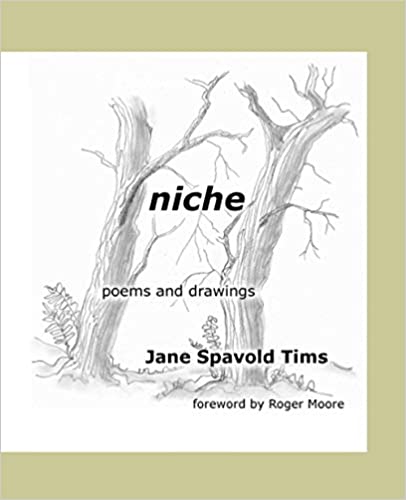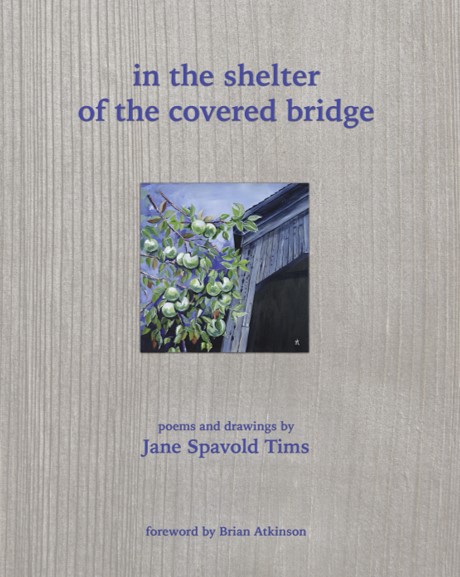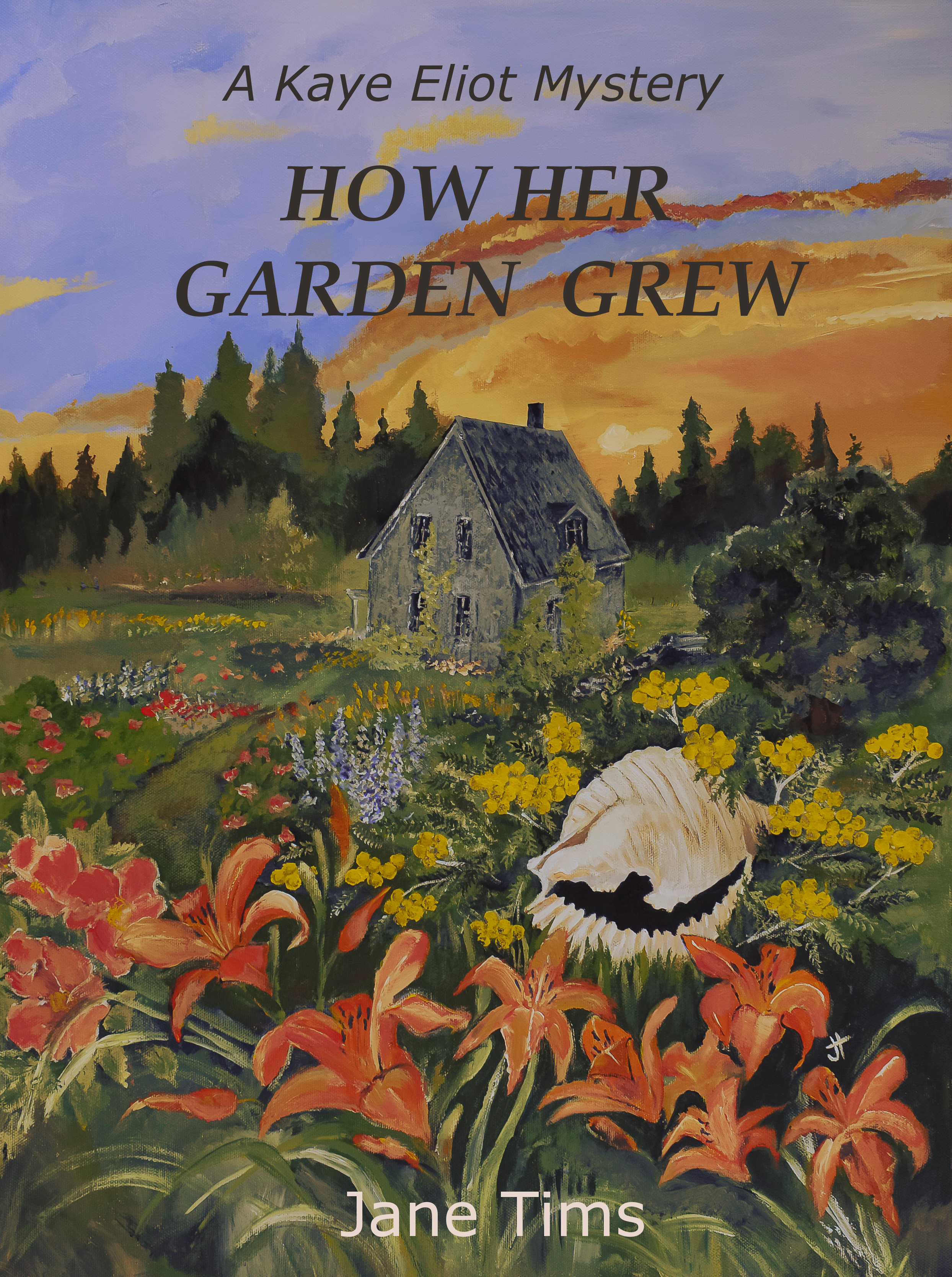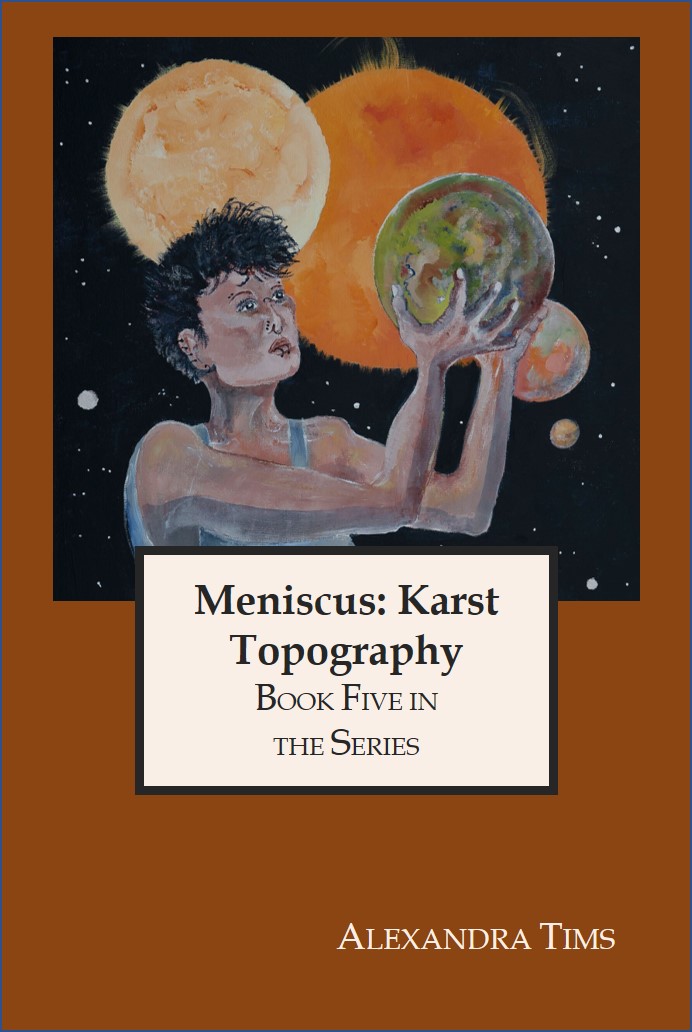Posts Tagged ‘writing process’
Cover Painting for ‘Meniscus: Reckoning’
In preparation for the release of ‘Meniscus: Reckoning,’ the next book in the Meniscus Science Fiction Series, I have finished the painting for the cover.
~
The painting is based on the pencil drawing ‘Travelling the Lip.’ It shows six travellers as they cross the treacherous El’ban Elevations, on their way to rescue James, imprisoned in El’ban. The group, in order, are Kotildi (the wild alien ‘wolf’), Belnar (one of the Slain), Odymn (heroine of many of the stories), Daniel (also a Slain), carrying Danny (Odymn and Daniel’s baby), and Don’est (the Dock-winder child, with her long neck).
~

~
To be consistent with other covers, I need a distant view of the Meniscus moons (Cardoth roe and Cardoth grill’en), a mid-range view of the travellers, and a nearer scene from the book. Campfires are a common theme in the story and who better to sleep by the fire than wolf-like Kotildi?
~

~
I was pleased with the painting. For a couple of days, I showed the travellers as black silhouettes against the Elevations. In the end, I gave them some colour, to suggest clothing and hair. I love the browns, blues and yellows in the painting.
~
To make the painting fit the space on the book cover, I made some alterations in GIMP (GNU Image Manipulation Program). I brought the moons closer to the mountain silhouette and moved the fire and sleeping Kotildi closer to the travellers. In the end, the image fit well with the cover design. Here is a sneak peek at the final cover.
~
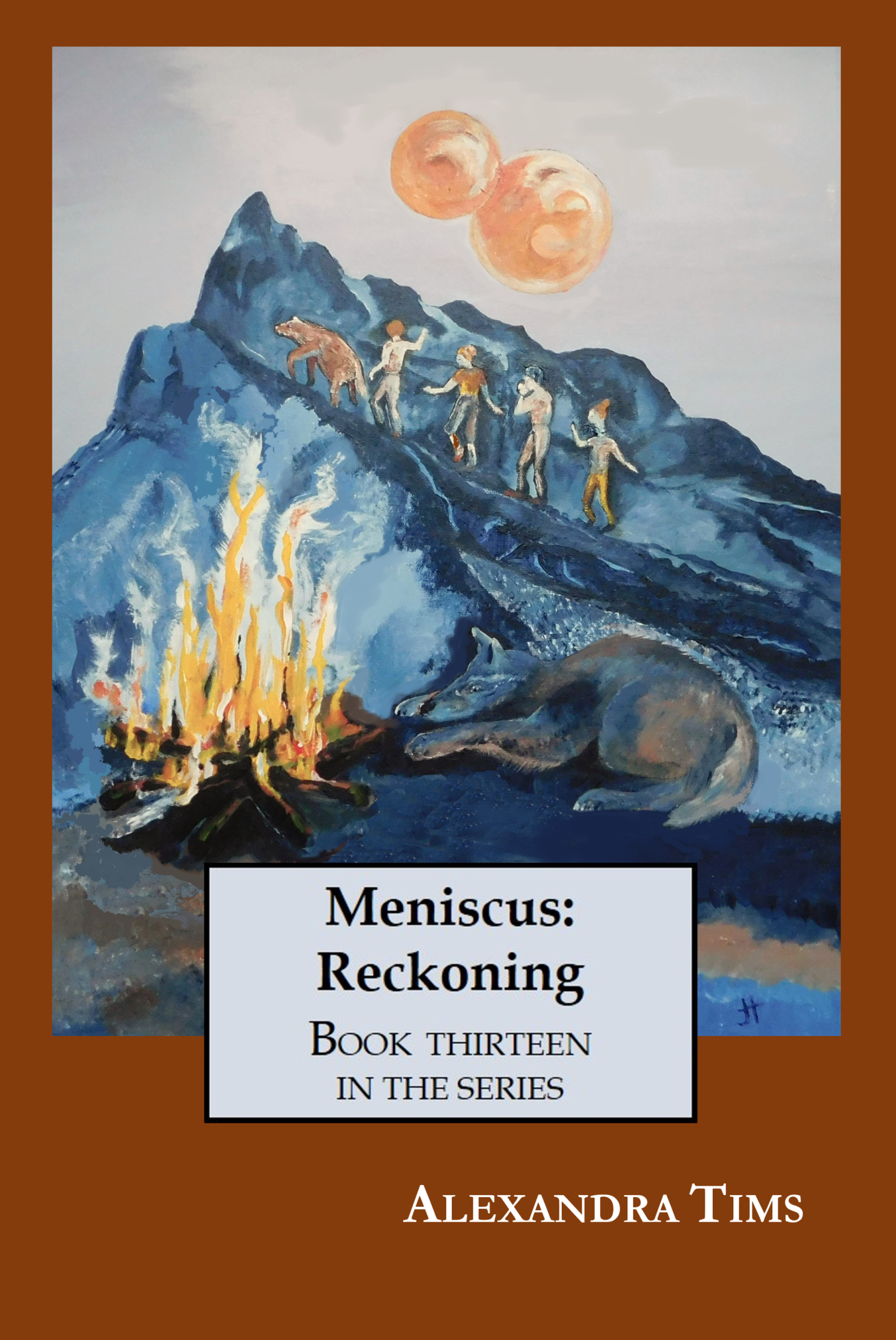
~
I am now re-reading Meniscus: Reckoning for the last time, making a few revisions as I go. I have also sent the proof to my beta-reader for her reactions.
~
I plan to release Meniscus: Reckoning in early May. I am looking forward to my reader response!
~
All my best!
Alexandra (a.k.a. Jane)
including ‘sound’ in writing
I am so proud of my new poetry book ‘mnemonic – soundscape and birdsong’ (Chapel Street Editions, 2024) because it focuses on including sound in writing. Of the five senses (vision, hearing, touch, smell and taste), most creative writing focuses on vision. It is a bit of a challenge to include the other senses in order to give a more complete idea of the sensations contributed by your surroundings.
~
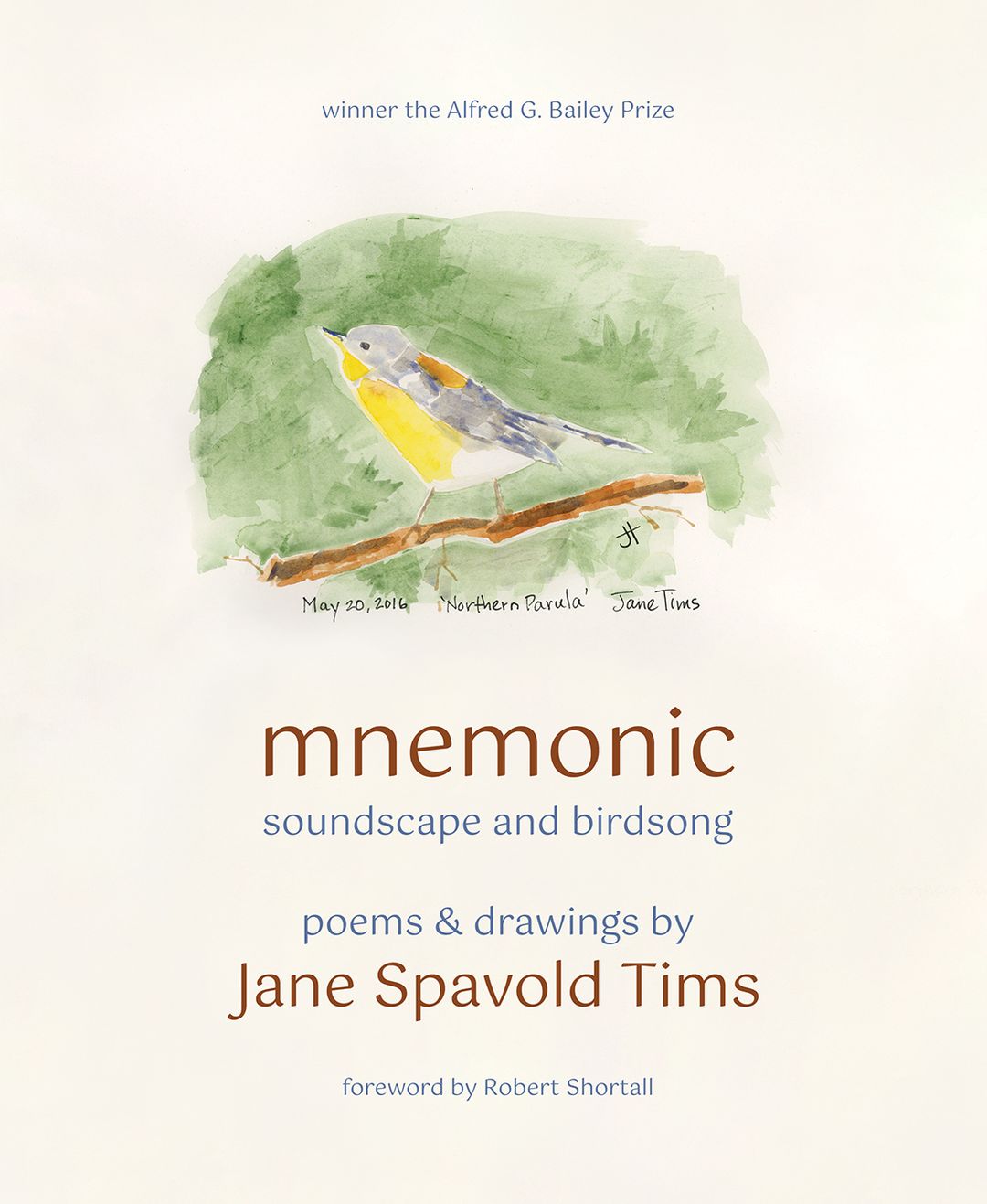
~
My book includes bird song as a main part of the soundscape. It also includes other sounds: the singing of a rock skipped across a frozen pond, the call of the spring peepers, the clinking of ice in glasses, the sound of a kettle boiling over a woodland fire.
~

~
For ways of including sounds in writing, you can look at some of my earlier posts here, and here.
~
I think my favourite poem in the ‘mnemonic’ collection is about my Dad who took us along the Yarmouth shore to find iron pyrite (fool’s gold). The sounds in this poem focus on the shorebirds. Here is a short excerpt:
4.
he takes us prospecting
we wedge into crevasses
keen for pyrite gold
cube within cube
embedded in stone
we always forget the hammer
we chip and scratch with fingernails
reach across rock
dare the waves
5.
a sanderling cries
quit quit!
6.
shorebirds
befriend me
a dowitcher sews a seam with her bill
bastes salt water to shore
the sanderling shoos back the tide
terns
plunge into the ocean
and complain they are wet
~





~
I hope you will have fun incorporating sound into your writing.
~
All my best,
Jane
drear November: Project #4 – writing and finishing a mystery story
As you may know, I have finished the final draft of my Kaye Eliot Mystery, Pareidolia. It is now available on Amazon.ca — just click here.
~

~
Pareidolia began as a search for an unusual way people from the past could communicate with people of the present. Each of the Kaye Eliot Mysteries has looked at one of these cross-time communication methods:
| How Her Garden Grew | letters |
| Something the Sundial Said | diary |
| Land Between the Furrows | postcards |
| Stained Glass | stained glass |
| Pareidolia | ? |
~
Every day I stare at the tiles in my kitchen and wonder at the images I see. One tile fascinated me in particular. I could see faces, and also horses and dogs, depending on the angle I considered. This made me think that a story or puzzle could be built into the tiles of a building and the idea for Pareidolia was born.
~

~
Have a look at the tile above. Do you see a Siamese fighting fish? a horse’s head viewed from above, a dog, a scary skull with teeth? What do you see in the circle, bottom left? …..
~

~
When I published the book, I wanted some of these tile-images to appear in the book. So as the Eliot family searches for the story in the clues, I show some drawings of some of the images I have seen.
As I say in the Acknowledgements for the book, ‘
‘…the strange little drawings I use to illustrate this book are of the creatures and faces I have seen in those tiles. Please do not think of them as poorly rendered drawings, but as the miraculous drawings of geological processes.’
~

~
Have a look at tiles you see and find a few images of your own. A great activity as you wait for an elevator!
All my best!
Jane (a.k.a. Alexandra)
Meniscus Science Fiction Series: the extras
As I write the Meniscus Science Fiction Series, a very enjoyable task is to update the extras in each book:
~
Ancient Argenop Wisdom: every book includes an associated line of ancient Argenop wisdom. The Argenops are the gentle rodent-like aliens who befriend the Humans. They became separated from the Dock-winders, in history and sentiment, when geology (The Fault) divided En’ast from Themble. I plan to do a full book collecting the wisdom of the ancient Argenops.

~
The Meniscus Solar System: This is a fairly recent edition to the books. A representation of the solar system of Meniscus includes: the two suns (Tathlet and Amblyn), the planets (Aagle, Meniscus, Di-natha and Sel), and the Meniscus moons (Cardoth roe and Cardoth grill-en).
~

~
This is Meniscus, a planet far from Earth: this is an introductory bit, meant to introduce readers of every book to some background information about the planet Meniscus. The text includes the odd behavior of water on the planet, a description of the landscape, the various aliens encountered, and a short history of the Slain. Oddly, this is the section I have occasionally forgotten to include in every book.
~
The Maps: Producing the maps of the planet Meniscus is essential to the writing since the stories are chronicles of the Human travels through the landscape. I produce the maps in GIMP, so I am able to highlight certain features of interest to a particular book. I also include a dotted line showing the path of the travels of the main characters. At first, only the east and west maps for Prell-nan South District were shown. As the adventure expanded, maps for east and west halves of Prell-nan North District were included. In the upcoming adventure Meniscus: The Reckoning, readers will see El’ban District, often mentioned in the earlier books.
~

North District
(West Half)
~
The Cast of Characters: I include all of the characters in the Series, whether they occur in the current book or not. The notes on the characters are meant to explore a brief history of each character: Human, Slain, Argenop, Dock-winder, Gel-head, and Others, including the pets. This section was added to books after …. at the suggestion of one of my terrific beta-readers.
~



~
Glossary: Various unfamiliar words used by Humans in the story are explained here. They include measurements, names of plant and animal life, and items found on the planet of Meniscus. Some of these are names borrowed from the local aliens, and others are names the Humans have devised for various items, based on their experience on Earth or with other Humans.
~

nodding woodland flower
corms edible
~
A Condensed Guide to Gel-speak: The dictionary, at first short, has grown with each book – there are now 180 words in the Gel-speak dictionary. Although most Gel-speak is translated right in the text, readers may like to find out how an idea is expressed in Gel-speak as the translation is not literal. So ‘genetic material’ is translated as ath-elan-elana, literally ‘body memory.’
~

~
The next book in the Series, Meniscus: The Struggle will be released in the next couple of weeks. I am looking forward to having a release and book signing in August, details to be announced here.
~

~
If you haven’t read any of the Meniscus books, there are a couple of places to jump in to the action:
Meniscus: Oral Traditions
Meniscus: Rosetta Stone
~

~
All my best,
keep reading!
Alexandra, a.k.a. Jane
Book Covers: from sketch to design
In producing my science fiction books, one of the many tasks is to produce a book cover for each book. I could hire this step out, but I made a decision early in my author experience to feature both my art and writing in producing my books.
~
There are ten (soon to be eleven) books in the Meniscus Science Fiction Series. Once I decided on the design for the first book (Meniscus: Crossing The Churn), I knew I wanted all the books in the series to follow a similar cover pattern. I liked the format of a single block showing the cover art and the general placement of title, volume number and author’s name. I also wanted all the cover art to show the two Meniscus moons (Cardoth-roe, the big moon, and Cardoth-grill’en, the little moon) and the characters in the book in silhouette.
~


~
Creating a book cover takes four main steps.
~
Step One is to consider how I want to present the book and what themes could be displayed.
Step Two is to do a black and white drawing of the cover.
Step Three is to do an acrylic painting of the drawing.
Step Four is to create a cover for the book, to be up-loaded to Kindle Direct Publishing (KDP) for both paperback and e-book editions.
~
The only cover to depart from the pattern (no drawing was produced that led to the cover), was Book Seven, Meniscus: Encounter with the Emenpod. Here are the drawings and final covers for all the books after the first:




















~
There is one other book, Meniscus: One Point Five – Forty Missing Days, that should be shown. Its cover came from a painting done to welcome people to my sales table at various book fairs.


All my best,
Jane ( a.k.a. Alexandra)
the input of my editor
I have had one editor since the beginning of the Meniscus science fiction series. My editor is Lee Thompson of Lee Thompson Editing + ... his business headline says: ‘editorial and design services to help you navigate the word’ … for me the words ‘help’ and ‘word’ say what Lee’s guidance is all about.
https://leethompsonediting.com
~
Lee has guided me through eleven books, challenging me to think deeply about the world of planet Meniscus. He has asked me if the dog-like Kotildi would ‘bark’ on an alien world. He has pointed out places where my poetic voice gets off-track. He always finds the places where I repeat words within a paragraph or stanza. He points out gaps in the action or logic. He tells me where he sees wobbles in my ‘Point of View.’ And his edits are delivered in a way that I laugh more often than I scowl.
~
Speaking of scowling, Lee says my consistent flaw is that my characters ‘frown’ almost more often than they breathe.
~
They frown …
~

~
and frown …
~

~
and frown …
~

~
Lee says I am no longer allowed to use the word ‘frown’ in my books. I have ‘TTF’ (Tendency to Frown).
~
Thanks to Lee, I frown less. Obtaining the services of a professional editor is one of the most important steps a writer can take. The best is to hire a great editor who will understand what you are trying to do and get you to see your own writing in a new way.
~

~
All my best,
Alexandra (a.k.a. Jane)
Book Cover – Land Between the Furrows
I have been working on the cover painting for the new book in the Kaye Eliot Mysteries: Land Between the Furrows.
First, I do a pencil drawing of the idea I have for the cover. In this book, grind stones from a local grist mill figure in the mystery.
~

~
Then I do a painting, based on the pencil drawing. This painting is in acrylics, 16″ by 20″.
~

~
Finally, I create the cover. This is, for me, the hardest step. I take the photo of the painting into GIMP, crop to get the correct dimensions (6″ by 9″) and scale the image to 360 dpi (pixels per inch). Then I bring the image into the KDP Cover Creater and add the text and so on.
~

~
The book will be ready to go live on March 15, 2021.
All my best,
Jane
Gargoyles?
I am working on my poetry manuscript ‘a glimpse of waterfalls.’ As always, I workshop some of the poems with my writing group Wolf Tree Writers. Wolf Tree has been together over thirty years and has assisted me greatly in improving my poetry.
~
This past week I read a poem to Wolf Tree called ‘from a window on the 3rd floor.’ In the third stanza, a gargoyle is mentioned. We talked about how a gargoyle is an ‘Old World’ (European) reference. It made me curious about gargoyles in Canada.
~

~
A gargoyle is a sculptural architectural feature used like a waterspout to transport rainwater away from the building. A gargoyle often depicts a grotesque other-world figure and also serves to frighten daemons away and remind people of the perils of doing harm. Sculptural features which look like gargoyles but which do not convey water are called grotesques.
~

~
Canada has many examples of gargoyles, occurring wherever architecture is gothic in design. There are many examples in Montreal, including on the campus of McGill University (Redpath Hall and Library), on churches (Christ Church Cathedral) and on private buildings (the Elspeth Angus and Duncan McIntyre House). The Peace Tower (Parliament Building) in Ottawa has numerous gargoyles and grotesques. For more information see https://sencanada.ca/en/sencaplus/how-why/gargoyles-and-grotesques-parliament-hills-sinister-sentinels/
~

~
from a window on the 3rd floor
~
I nudge curtain, interpret
streetscape, sirens
stream down the glass
fractal paths where drops
meet and coalesce
meet and coalesce
~
the puddle on the cobbled street
a pool at the base of a waterfall
edged in rock and fern
candy wrappers, paper coffee cups
brick an escarpment, rain spills
from ledges of stone
edges of stone
~
above, a gargoyle gushes
glimpse of reckless sky
heartened, I consider
merits of solitude
building facade
pavement pulses
red and blue
red and blue
~

~
Are there any gargoyles in the architecture of your area?
~
All my best!!
Jane
Starting a new book 2
Today, I finished the rough draft of my new book in the Meniscus Series. This book will deal with discovery of a secret that will bring down the nasty Dock-winders.
The working title of the book is Meniscus: Resistance.
Before you become amazed at my productivity, remember that my Meniscus stories are in narrative poetry and are a quick read. At this early stage, this book has 11,600 words.
~
The next step in my process is tedious, but very helpful.
~
I create a Table of Chapters. Each ‘Chapter’ in the table is described by ‘What happens,’ ‘Setting.’ ‘Point of view,’ ‘Characters,’ and ‘Theme Progress.’ I can work through my entire document:
- change all the place holders to actual Chapter numbers;
- make certain the setting is described in detail;
- ensure point of view in each chapter is clear and does not waver;
- list the characters in the chapter and ensure everyone has a role to play; and,
- check on progress made towards resolution of the story.
Table of Chapters for Meniscus: of Resistance
| Chapter | What happens | Setting | Point of View | Characters | Theme Progress |
| Prologue | James escapes | Space dock | James | James, D, DW, GH, Drag’on | Introduce antagonists |
| 1. | Trath crawls from mine | base of Flame Mtn | Trath | Trath | Trath escapes |
| 2. | Abra finds six glyphs | obelisk at The Tip | Abra | Abra | Abra finds glyphs |
| 3. | Evening meal at Hath’men | Village of Hath’men | Omniscient | James, Drag’on villagers | Drag-on set apart |
| etc. |
~
If the story is missing an ending, or has continuity issues, this building of the table helps me to focus on the story progress and, by the time the table is completed, the story is more complete.
~
Once these tasks have been done, the Table of Chapters can be set aside and used later for any stage of the revision process. For example, I can check each chapter for phases of the moon, so the full moon doesn’t occur two days before the crescent moon! I also use the table to make certain the illustrations are evenly distributed throughout the text.
~

~
Off I go, to fill out the Table of Chapters and to find an ending for my book.
~
All my best!
Stay safe.
Jane
starting a new book
I love working on multiple writing projects at once. So it is no surprise to me that I have books and projects at all stages in development:
- The next book in my Kaye Eliot Mysteries is in final draft (‘Land Between the Furrows,’ release date March 2021)
- The next of my poetry books (‘niche‘) is in proof stage (release December 2020)
- I have just released the next book in the Meniscus Science Fiction Series (Meniscus: The Knife) and the next is in final Draft (‘Meniscus: Meeting of Minds,’ release date May 2021).
~

~
So, this week, in the narrow crack between revisions, I have started to draft another in the Meniscus Series. Tentatively entitled ‘Meniscus: Resistance,‘ this will be the last in the Meniscus Series (she says).
~
It has been so long since I started a new book, I have forgotten how the process unfolds.
~

~
1. A long time thinking, while doing other things, about the theme … how this book will connect with the last, who the characters will be, where the action will occur and so on.
2. A few sleepless nights, staring at the ceiling, thinking about opening scenes, how my characters are feeling and precipitating events.
3. Eventually I am ready to start the first drafting. For this, I need a relaxing, familiar space. I like to sit on the sofa in my living room, so most of the drafting will be on my iPad in the Word app. At some points, I may shift my focus and do some writing in longhand.
4. Even during drafting, I start revising. I go back and forth, moving details around, gleaning from earlier books to avoid inconsistencies, refining ideas. Some days I turn to the main computer to do a read-through and correct spelling and syntax, and to start to refine the poetry of the story-telling.
~

~
Of all the parts of the writing process, the early drafting is my favourite. It is also (for me) the quickest. By starting a new project, I have resolved to follow through with later revision work, illustration (including the cover art), formatting and marketing.
~
So, here I am in happy land, pushing my characters around, and sometimes trying to catch up to them …
~




~
All my best,
Jane



